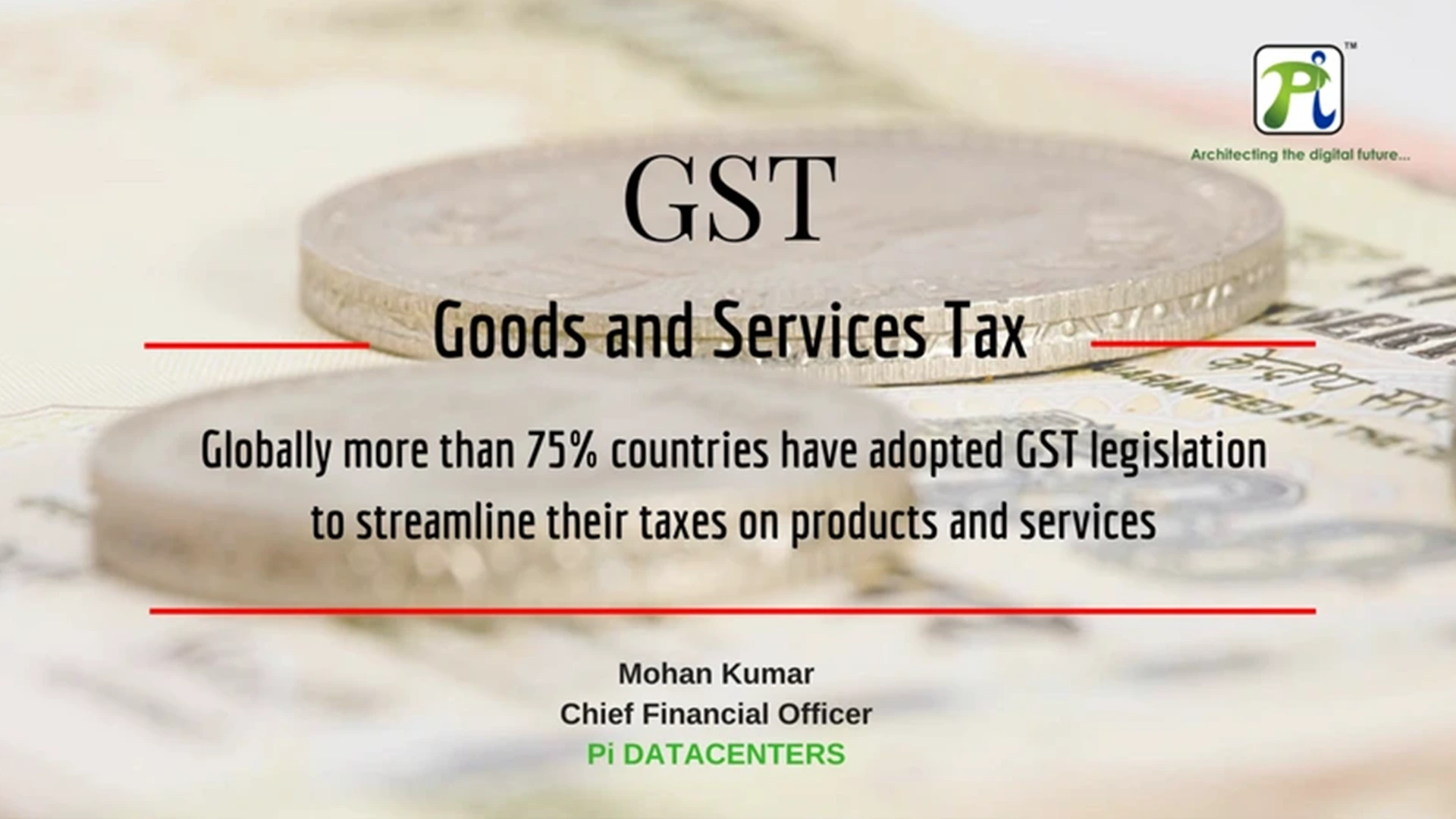We Will Get Back To You As Soon As Possible


To explain simply, Goods and Services Tax (GST) is a comprehensive tax levied on manufacture, sale and consumption of goods and services at a national level. Through a tax credit mechanism, this tax is collected on value-added goods and services at each stage of sale or purchase in the supply chain
Globally more than 75% countries have adopted GST legislation to streamline their taxes on products and services. All OECD* countries (except US) follow GST tax model as the general standard for taxing their products and services.
This landmark legislation took more than 7 years to become a reality. The clash of ego amongst the Indian mainstream political diaspora, coupled with the lack of clarity and consensus on various legislative aspects and the supposed loss of revenues to states contributed to the delay. Does GST mean that we have a new tax in addition to various taxes we already have? The answer is no. What does this all mean to a common man on the street? Let us understand in detail.
Broadly all taxes are classified into direct and indirect. Direct taxes are paid directly by the individual to the government. Eg., Income tax. In case of Indirect taxes, the taxes are levied on a person who consumes the goods and services and is paid indirectly to the government through the merchant. The person on whom it is levied bears its burden. The burden of tax can be shifted to another person. This can be explained in a brief diagram below:
GST will eliminate the following indirect taxes at the Central and State level.
Central Taxes
Central Excise Duty
Additional Excise duty
Special additional duty of Customs
Additional Customs duty [or Counter Vailing Duty (CVD)]
Central Cesses/surcharges relating to supply of goods and services
Service tax
State Taxes
Value Added Tax (VAT)/Sales tax
Entertainment tax excluding such taxes levied by local bodies
Luxury Tax
Purchase Tax
Octroi and Entry Tax
Central Sales Tax
Taxes on lottery, betting and gambling
State Cesses/surcharges relating to supply of goods and services
The GST is being introduced not only to get rid of the current patchwork of indirect taxes that are partial and suffer from infirmities, mainly exemptions and multiple rates, but also to improve tax compliances.
Under this regime, the taxation burden will be divided equitably between manufacturing and services, through a lower tax rate by increasing the tax base and minimizing exemptions.
A unified GST is an economically efficient solution for all organized and unorganized sector, as it simplifies the indirect tax structure to one general rate that can be paid by all companies. Under this, every company gets a deduction on the taxes already paid by its suppliers. That results in every buyer ensuring that his supplier has paid his part, to claim his deductions.
It is expected to help build a transparent and corruption-free tax administration. GST will be levied only at the destination point, and not at various points (from manufacturing to retail outlets). It is also estimated that India will gain, as implementation of GST would help promote exports, raise employment and boost growth.
In the GST system, both central and state taxes will be collected at the point of sale. Both components (the central and state GST) will be charged on the manufacturing cost. This will benefit individuals as prices are likely to come down. Lower prices will lead to more consumption, thereby helping boost the economy.
An illustrative example is given below:
|
|
Existing |
Under GST |
|
Manufacturer |
|
|
|
Selling Price to Wholesaler |
100.00 |
100.00 |
|
Excise Duty 14% / GST 18% |
14.00 |
18.00 |
|
Total Invoice Value |
114.00 |
118.00 |
|
|
|
|
|
Wholesaler |
|
|
|
Input Price |
114.00 |
118.00 |
|
Add 25% Margin |
28.50 |
29.50 |
|
Selling Price |
142.50 |
147.50 |
|
Add VAT 14.5% / GST 18% |
20.66 |
26.55 |
|
Less GST input credit |
– |
– 18.00 |
|
Total Invoice Value |
163.16 |
156.05 |
|
|
|
|
|
Retailer |
|
|
|
Input Price |
163.16 |
156.05 |
|
Add 25% Margin |
40.79 |
39.01 |
|
Selling Price |
203.95 |
195.06 |
|
Add VAT 14.5% / GST 18% |
29.57 |
35.11 |
|
Less GST input credit |
– 20.66 |
– 26.55 |
|
Total Invoice Value |
212.86 |
203.62 |
|
|
|
|
|
Total Taxes (figures in Red) |
43.57 |
35.11 |
|
Note – 1. Input costs eligible for GST credits assumed to be Nil at Manufacturer point |
|
Note – 2. GST rate assumed @ 18% in this example |
|
Note – 3. It is assumed that the benefit of input GST credits is passed on to the customer at each level |
To conclude, GST is welcome legislation, which will help achieve the following:
Easy compliance
Uniformity of tax rates and structures across the value chain from the manufacturer to the end consumer
Real elimination of the cascading effect of taxation
Improved competitiveness for the trade and industry
Reduction in compliance cost
Easy tax administration for the state and central governments
Better controls on leakage
Higher revenue efficiency due to increased tax base
From CFO’s Desk...
Questions? We're here to help.
©2025 Pi DATACENTERS® Pvt. Ltd. All rights reserved
